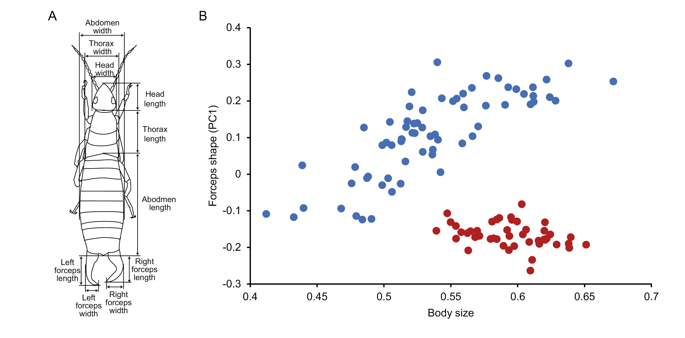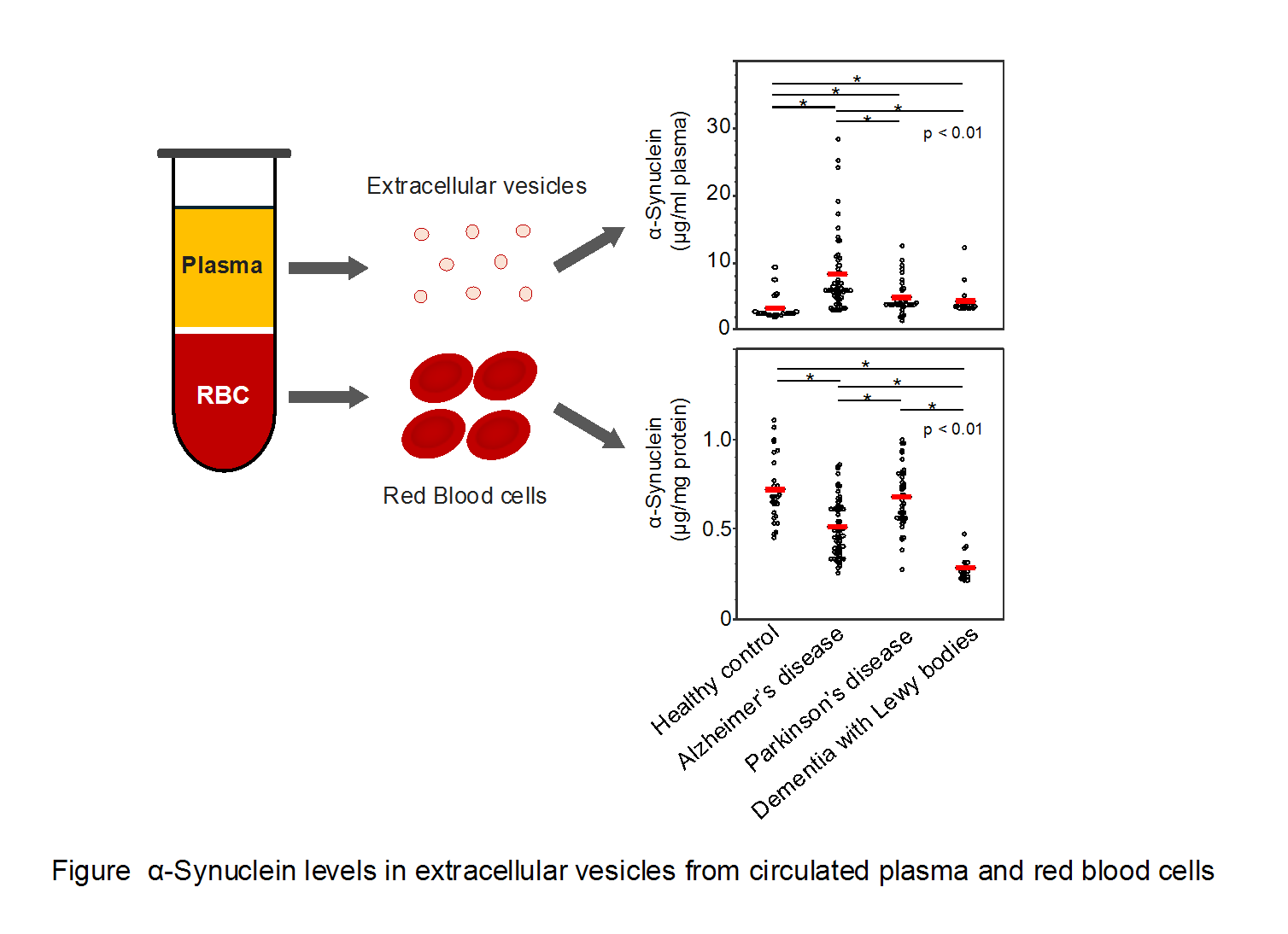October 21, 2024
Polycyclic Aromatic Hydrocarbon (PAH) Concentration Decreased by Half After Passing Through the Digestive Tract of the Marine Worm
The Purification Ability of the Marine Worm in Degrading PAHs in Tokyo Bay Mud
Dr. Atsuko Nishigaki and their research team from the Department of Environmental Science at the Faculty of Science, Toho University, discovered that the marine worm Marphysa sp. E (sensu Abe et al. 2019), an annelid living in the tidal flat sediments of Tokyo Bay, rapidly decreased the concentration of polycyclic aromatic hydrocarbons (PAHs), which are carcinogenic environmental pollutants, by ingesting and excreting organic-rich reduced mud containing high concentrations of PAHs. The PAH concentration was halved within two hours.

From left: Dr. Kenji Okoshi, Mr. Yuichiro Osaka, Dr. Mayu Onozato, Dr. Atsuko Nishigaki

Dr. Atsuko Saito and their research team from the Department of Environmental Science at the Faculty of Science, Toho University, discovered that the marine worm Marphysa sp. E (sensu Abe et al. 2019), an annelid living in the tidal flat sediments of Tokyo Bay, rapidly decreased the concentration of polycyclic aromatic hydrocarbons (PAHs), which are carcinogenic environmental pollutants, by ingesting and excreting organic-rich reduced mud containing high concentrations of PAHs. The PAH concentration was halved within two hours.
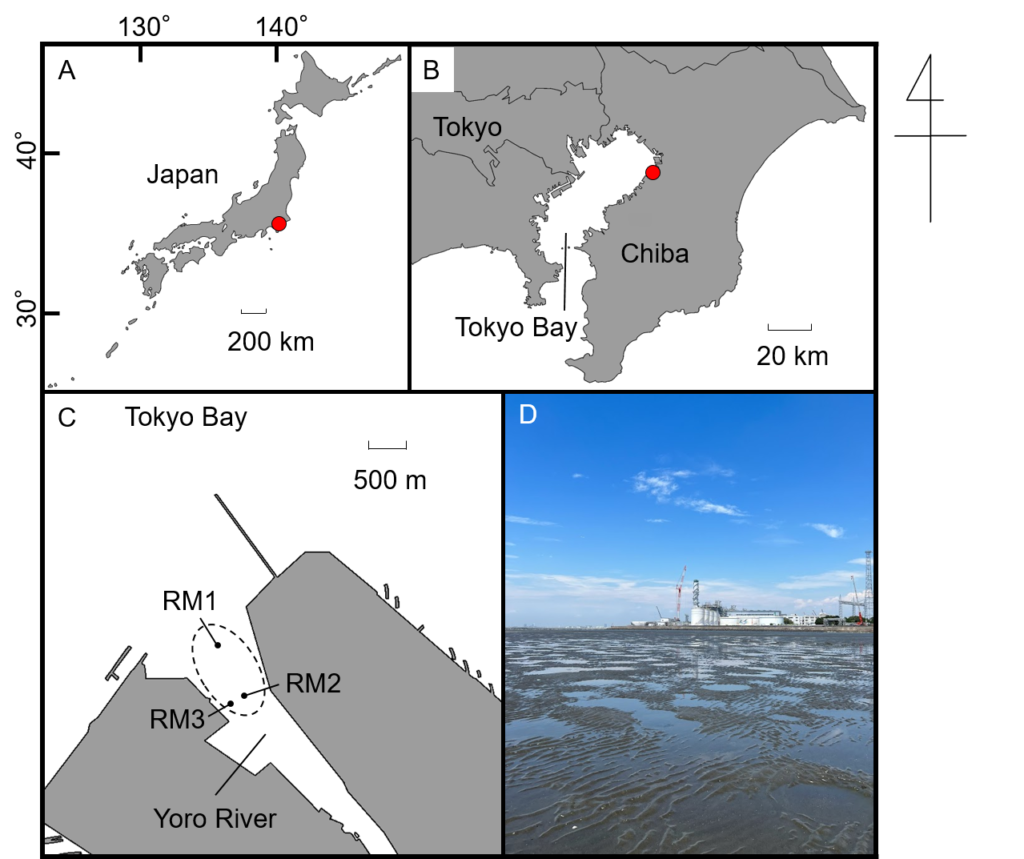
Figure 1: Sampling sites in the Yoro tidal flat, Ichihara City, Chiba Prefecture, Japan. Red circles in (A) and (B) show the location of the Yoro tidal flat. The dashed ellipse in (C) shows the sampling area, from where the fecal pellets of Marphysa sp. E were collected; reduced mud (RM) was collected from RM1, RM2, and RM3. (D) Image of the Yoro tidal flat (July 19, 2023).
Key Points:
- The annelid Marphysa sp. E selectively ingests and excretes reduced organic mud, which contains high concentrations of PAHs, persistent organic environmental pollutants.
- While the PAH concentration in the feces of the worms decreases by 46% within two hours, the concentration in the reduced mud decreases by only 8% during the same period.
- For the rapid degradation of PAHs, the reduced organic mud must pass through the digestive tract of the marine worm .
- The significant degradation of PAHs in worms’ feces appears to be linked to the microorganisms or enzymes present in the digestive tract of the marine worm . Marphysa sp. E is thought to play a significant role in the purification of tidal flat environments through its feeding and excretion behaviors.
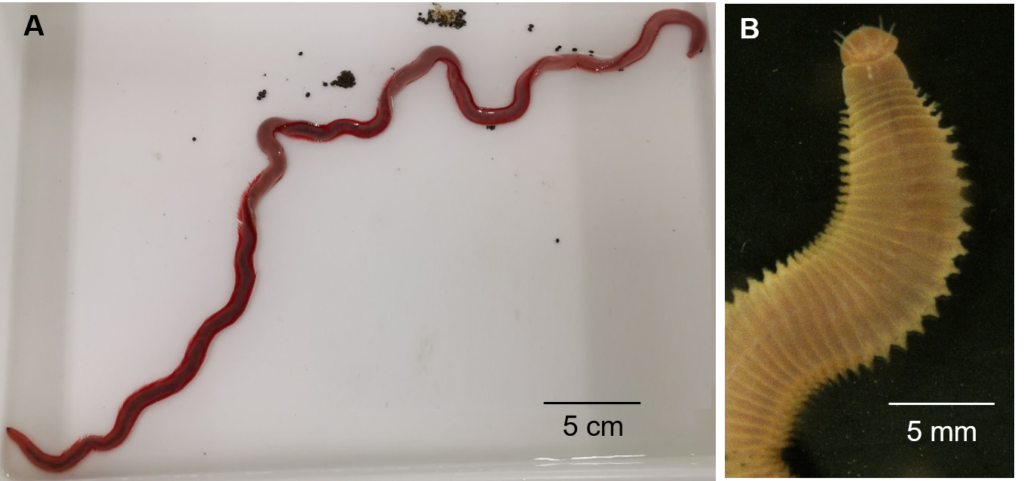
Live coloration of Marphysa sp. E sensu Abe et al. (2019).
(A) entire body, with its head towards right, (B) magnification of anterior end.
Source: Yuichiro Osaka, Satoshi Abe, Hirokazu Abe, Masaatsu Tanaka, Mayu Onozato, Kenji Okoshi, Atsuko Nishigaki, “Sources of Polycyclic Aromatic Hydrocarbons in Fecal Pellets of a Marphysa Species (Annelida: Eunicidae) in the Yoro Tidal Flat, Japan,” Zoological Science, 40(4), 292-299 (2023).
Source: Yuichiro Osaka, Satoshi Abe, Hirokazu Abe, Masaatsu Tanaka, Mayu Onozato, Kenji Okoshi, Atsuko Nishigaki, “Sources of Polycyclic Aromatic Hydrocarbons in Fecal Pellets of a Marphysa Species (Annelida: Eunicidae) in the Yoro Tidal Flat, Japan,” Zoological Science, 40(4), 292-299 (2023).
Research Overview:
Benthic organisms living in tidal flat sediments are believed to contribute to material circulation in sediment environments by burrowing and feeding. A previous study reported that the feces of the annelid Marphysa sp. E , which resides in the tidal flat sediments of Tokyo Bay, contained high concentrations of PAHs that were halved within two hours of excretion. The study findings also revealed that the PAHs in the worms’ feces originated from reduced organic mud scattered in tidal flat sediments. Marphysa sp. E selectively ingested and excreted this reduced organic mud, which contained high concentrations of PAHs. The halving of the PAH concentration observed in worm feces within two hours was extremely rapid compared to the general half-life of PAHs in sediments, which ranges from several weeks to several months. However, whether this degradation activity could be attributed to the passage of the reduced organic mud through the digestive tract of Marphysa sp. E or if the reduced mud itself had degradation activity remained unclear. In this study, we examined the time-course changes in PAH concentrations in feces and reduced organic mud using gas chromatography-mass spectrometry (GC-MS), followed by a statistical analysis. The results showed that such a rapid decrease in the PAH concentration did not occur in the reduced mud itself; rather, it occurred when the mud passed through the digestive tract of Marphysa sp. E . Based on these findings, we concluded that Marphysa sp. E contributes to the environmental purification of Tokyo Bay by ingesting and excreting reduced organic mud containing high concentrations of PAHs.
Benthic organisms living in tidal flat sediments are believed to contribute to material circulation in sediment environments by burrowing and feeding. A previous study reported that the feces of the annelid Marphysa sp. E , which resides in the tidal flat sediments of Tokyo Bay, contained high concentrations of PAHs that were halved within two hours of excretion. The study findings also revealed that the PAHs in the worms’ feces originated from reduced organic mud scattered in tidal flat sediments. Marphysa sp. E selectively ingested and excreted this reduced organic mud, which contained high concentrations of PAHs. The halving of the PAH concentration observed in worm feces within two hours was extremely rapid compared to the general half-life of PAHs in sediments, which ranges from several weeks to several months. However, whether this degradation activity could be attributed to the passage of the reduced organic mud through the digestive tract of Marphysa sp. E or if the reduced mud itself had degradation activity remained unclear. In this study, we examined the time-course changes in PAH concentrations in feces and reduced organic mud using gas chromatography-mass spectrometry (GC-MS), followed by a statistical analysis. The results showed that such a rapid decrease in the PAH concentration did not occur in the reduced mud itself; rather, it occurred when the mud passed through the digestive tract of Marphysa sp. E . Based on these findings, we concluded that Marphysa sp. E contributes to the environmental purification of Tokyo Bay by ingesting and excreting reduced organic mud containing high concentrations of PAHs.
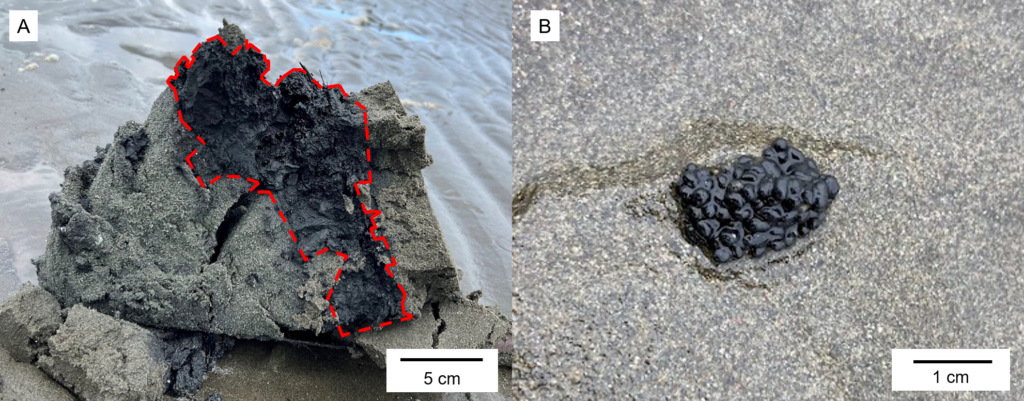
Figure 2: Images of collected samples. (A) Reduced mud (marked by red dashed lines) is a black sediment with high viscosity scattered over a large area of the tidal flat. (B) A mound of fecal pellets of Marphysa sp. E excreted on the surface of the tidal flat.
Title:
Changes in the concentration of polycyclic aromatic hydrocarbons in fecal pellets of Marphysa sp. E and reduced mud in the Yoro tidal flat, Japan
Authors:
Yuichiro Osaka, Mayu Onozato, Kenji Okoshi, Atsuko Nishigaki
DOI:
10.1016/j.marpolbul.2024.116977
Changes in the concentration of polycyclic aromatic hydrocarbons in fecal pellets of Marphysa sp. E and reduced mud in the Yoro tidal flat, Japan
Authors:
Yuichiro Osaka, Mayu Onozato, Kenji Okoshi, Atsuko Nishigaki
DOI:
10.1016/j.marpolbul.2024.116977

Changes in the concentration of polycyclic aromatic hydrocarbons in fecal pellets of Marphysa sp. E and reduced mud.
READ MORE RESEARCH NEWS - SCIENCE
ACADEMICS
Undergraduate Programs
– Medicine
– Pharmaceutical Sciences
– Science
– Nursing
– Health Science
Graduate Programs
–Medicine
–Pharmaceutical Sciences
–Science
–Nursing
Undergraduate Programs
– Medicine
– Pharmaceutical Sciences
– Science
– Nursing
– Health Science
Graduate Programs
–Medicine
–Pharmaceutical Sciences
–Science
–Nursing
RESEARCH
– News
– Guidelines & Policies
– Support Offices
– Facilities
– Security Export Control
Non-Degree Programs
– Clinical Elective Program
– International Physician Observership Program

